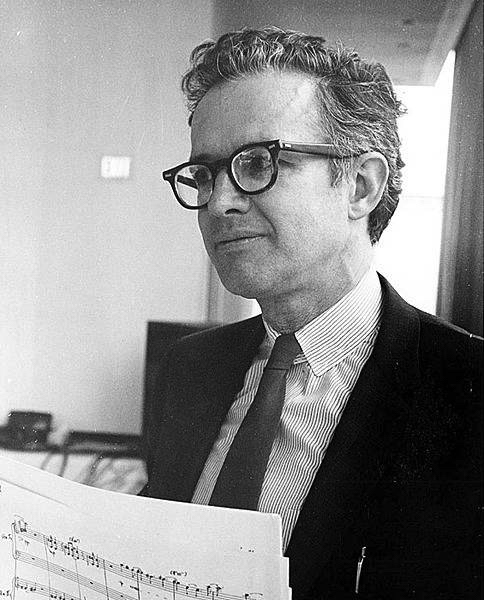Photo University of Buffalo
Lejaren Hiller, an avant-garde composer who collaborated with John Cage and whose 1956 «Illiac Suite» was the first substantial piece of music composed on a computer, died on Wednesday at the Niagara Lutheran Nursing Home in Buffalo. He was 69. The cause was Alzheimer's disease, said his wife, Elizabeth. Mr. Hiller was a prolific composer who wrote both electronic and conventional scores, some of which are enlivened by a satirical wit. «Avalanche» (1968), a music-theater work, parodied everything from culture centers and prima donnas to academic philosophers. And with characteristic humor, he once announced a plan to put an end to rock music: he would have computers compose all possible rock songs, then copyright them and refuse to let anyone perform them. Most of Mr. Hiller's works -- including six piano sonatas, seven string quartets and a variety of orchestral and vocal works -- were more serious and direct, and some were regarded as uncompromisingly difficult. But his compositional career was almost an afterthought: he backed into it from a career in chemistry, and he continued to teach science even after composing some of his best-known works. Mr. Hiller was born in New York City on Feb. 23, 1924. He studied chemistry at Princeton University, where he also
took composition lessons with Milton Babbitt and Roger Sessions. Composition remained an avocation for a while; he worked as a research chemist in the late 1940's and joined the science faculty of the University of Illinois in 1952. For his scientific work, Mr. Hiller had access to the university's room-size Illiac computer, and in the mid-1950's he and Leonard Isaacson began investigating the system's musical possibilities. Using the computer to make certain compositional decisions, they collaborated on the «Illiac Suite» for string quartet, a work that attracted considerable attention, particularly among Serial composers who saw in the computer new ways to free their imaginations from the pull of conventional tonality and timbre. He directed the electronic music studio at the University of Illinois until 1968, and it was just before leaving to join the faculty of the State University of New York at Buffalo that he collaborated with John Cage on one of his most famous pieces, «HPSCHD.» A deliberately chaotic work, «HPSCHD» was scored for seven harpsichords (on which works by Mozart were performed) and 59 amplified channels of taped sound. Mr. Hiller wrote three books: «Experimental Music» (1959), with Mr. Isaacson; «Principles of Chemistry» (1960), with Rolfe H. Herber, and «Informationstheorie und Computermusik» (1964).
